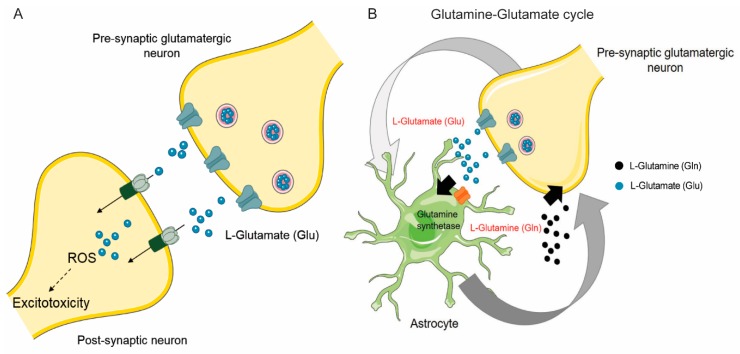Figure 1.
Glutamine/Glutamate neuroglial cycle and glutamate-induced excitotoxicity. (A) Pre-synaptic glutamatergic neurons utilize glutamine to synthesize the excitatory neurotransmitter, glutamate, which is then released during synaptic transmission. Glutamate then interacts with post-synaptic glutamatergic receptors. Excess glutamate however, leads to oxidative stress and neuronal injury, termed as excitotoxicity. (B) Astrocytes help mitigate glutamate-induced excitotoxicity by removing glutamate from the synapse. Glutamate is then converted to glutamine by the enzyme glutamine synthetase, an enzyme that is present in astrocytes but not in neurons. Glutamine is recycled to neurons to enable glutamate synthesis. Abbreviations: ROS, reactive oxygen species.

